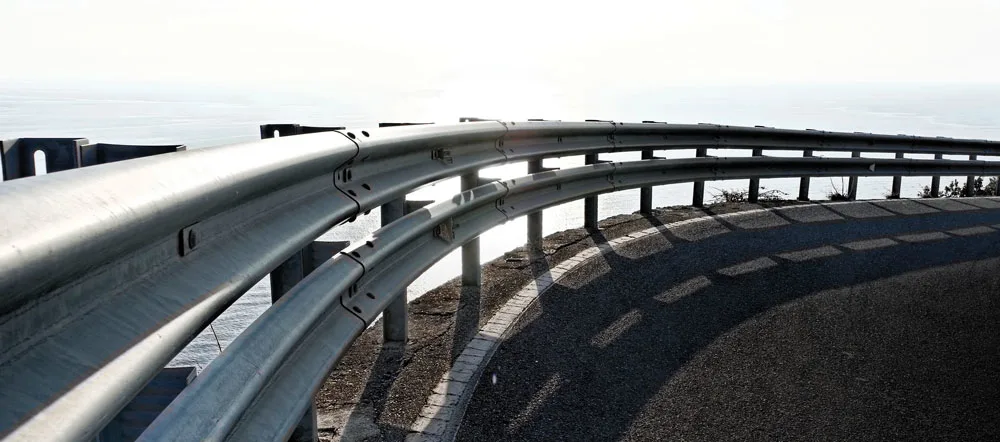Guardrails and Growth: Lessons in Safety and Strategy from the ICU to the Boardroom
Written By Rich Madsen
A few months ago, a close family member was diagnosed with a brain tumor. Like so many others in similar situations, our family spent long days and nights in the hospital—navigating uncertainty, leaning on healthcare professionals, and observing the many safeguards built into modern patient care. One safety feature stood out to me in particular: the thoughtfully designed hospital bed in the intensive care unit. Its bedrails were more than a practical detail—they were a quiet but powerful symbol of protection, stability, and structured support.
That moment in the hospital reminded me of a recent visit to the Med One Rental distribution center in La Mirada, California, where I had seen rows of high-tech hospital beds ready to be delivered to facilities in need. I was struck by how deeply intertwined safety and innovation are in both healthcare and business.
Bedrails, in a hospital, are there to protect patients at their most vulnerable. They prevent harm, support care, and still allow for necessary movement. The same concept applies in business—especially for organizations like Med One. Strategic safeguards, or “guardrails,” are critical for any company that aims to grow while staying aligned with its mission and values.
THE BUSINESS CASE FOR GUARDRAILS
On a winding mountain road, few drivers question the need for guardrails— until it’s too late. I was reminded of this while watching a grassroots social media campaign from a small community advocating for highway safety. Their tagline: “Guardrails: No one needs them… until they do.”
That sentiment applies just as powerfully to business. Guardrails don’t inhibit progress; they make forward movement safer and more sustainable. In fact, they create the space within which creativity, agility, and innovation can flourish. At Med One, our mission is to make critical medical equipment available to those who need it most. That mission is only possible because of the thoughtful, strategic guardrails our leadership team has put in place—from ethical frameworks to clearly defined roles, risk controls, and data-driven decision-making.
NAVIGATING CHANGE: STARTUPS VS. ESTABLISHED ORGANIZATIONS
One of the greatest challenges for established businesses today is maintaining agility in a rapidly changing marketplace. Startups are like potted plants—they’re portable, flexible, and quick to adapt. In contrast, established companies resemble mature pine trees: deeply rooted, steady, and capable of withstanding storms, but harder to pivot quickly.
This metaphor highlights an important tension. Mature organizations have the benefit of experience, infrastructure, and tested practices. But they can also risk rigidity if they don’t build in systems for dynamic change. The key is to preserve the strength of the root system while adding mechanisms that enable responsiveness—strategic guardrails that empower teams to innovate without losing direction.
EMPOWERMENT WITHIN BOUNDARIES
So, how can large companies stay flexible while controlling risk? By giving their teams the freedom to act within well-defined boundaries. This means replacing micromanagement with trust— and replacing chaos with clarity.
When leaders establish clear, strategic parameters, employees are empowered to act autonomously. Much like the barriers on a highway, these guardrails create a zone where innovation and execution can happen confidently and quickly. In today’s environment, large organizations can—and must—move as fast as startups. But that only happens when leaders trust their teams and provide them with the tools and boundaries to succeed.
DEFINING THE GUARDRAILS
At Med One, our guardrails include:
- Clearly defined roles for internal leadership and board members.
- Strategic partnerships that extend our impact while aligning with our mission.
- A relentless focus on purpose and value creation.
- Data-informed practices that guide our financial and operational decisions.
The Role of the Board: Governance as a Strategic Guardrail
As Med One’s Corporate Secretary and an active member of our Board of Directors, I understand how critical it is for boards to serve as both visionaries and stewards. The board doesn’t run daily operations, but it plays a vital role in establishing the guardrails that shape long-term direction, performance monitoring, and governance oversight.
When board members bring their diverse experiences and engage meaningfully, they help define the path forward while ensuring that progress stays aligned with the company’s core values. This balance of leadership and accountability forms the foundation for sustainable growth.
Final Thoughts: Safety and Strategy Go Hand in Hand
In healthcare and in business, it’s often the unseen support structures that make the greatest difference. Whether it’s a hospital bedrail protecting a vulnerable patient, or a strategic boundary empowering a team to act with confidence, guardrails are essential.
As companies scale, complexity increases. So does the risk of drift, misalignment, or missed opportunities. But with well-designed guardrails—clear roles, shared values, thoughtful governance—organizations can navigate change, seize opportunities, and continue delivering value with confidence.
Because the truth is simple: no one thinks they need guardrails—until they do. The best organizations put them in place long before they’re tested.



